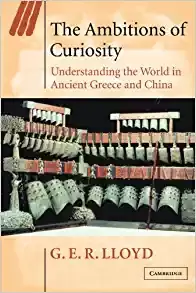By Peter Galison
W.W. Norton & Company, 2003, 389 pages
Galison walks the reader through a significant shift in scientific thought through the contemporary history of the two titled scientists. Both were examining issues related to interactions of space and time. Einstein is obviously the more famous outside scientific circles. Both were approaching the subject in connection with some famous mathematical equations published by physicist James Clerk Maxwell. These two were not alone. Many others (Gauss, Plank, Ampere, Faraday, etc.) created theories around his ideas to later be widely adopted in this area Maxwell explored on electromagnetism.
Poincare was interested, among other things, in creating widely adopted convention on both the reference longitude grid of the globe, and a method for setting a universal time system. The practical goals led him to some larger theoretical conclusions. He was a few decades ahead of the younger Einstein, and both referenced some of the same theoretical works that preceded them. Einstein was less interested in setting a universal standard, as we was in trying to understand relationships among space, time, and relative speed.
It seems like there were two larger differences between these two theorists. Poincare wanted to have a central reference point from which to compare other similar points within time and space. He also believed in the long held assumption of the existence of an aether in space, meaning an undefined substance that exists everywhere. Einstein was not worried about either of these. He was looking for a way to explain any motion or time relative to any other motion or time. He also simply ignored mathematical considerations of trying to account for an unknown substance such as the aether. Ultimately, we all know which view of physics became the ‘standard’ in our day.
For Poincare, it is not important how one measures time, distance, etc. so long as all agree to the system. The French were looking for a rationalized (specifically decimal-based) system. For example Galison notes that Poincare and others complained that one needs three measurements for time (h, m, s) or for global positioning (d, m, s). Setting measurements on multiples of 24 or 360 as was and still is the norm, is arguably more complex and less arithmetically friendly than a 10-based system such as a 10 hour day or a circle (the globe) divided by 100 degrees.
All measurement is about convention (an adoption consensus). For example, Galison points out how Greenwich, England seemed to win out over Paris on the prime meridian argument because 70% of shipping captains of the day were already using it as such. There was actually a fairly strong competition between England and France over where the prime meridian should be located. Greenwich and Paris had the two most well-established astronomical observatories and both argued for the longitude of their particular location as the prime.
Literally any system can be adopted, and often is adopted, on false belief. Galison himself falls into such a trap at the bottom of page 34 where he describes finding latitude as 'simple' by noting the position of the polar star. Sadly, that only works for the northern hemisphere leaving out half of the globe! Northern countries 'decided' or 'adopted' a system assuming latitude based on this format (equator is 0 degrees, pole is 90 degrees) then simply applied the same logic in the opposite direction to get a north and south latitude scheme. It might have been just as effective to say the south pole was 0 degrees and the north pole 180 degrees (or any other scale, or in the opposite direction for that matter), and not start based on the north star with a northern hemisphere focus. Since northern (and most assuredly European) explorers and mariners adopted the polar star method for navigational convenience the system based on the 360-degree angular representation became the normal approach. Similar astronomical navigation was adopted in the Middle-East and Asia using the polar star.
Peter Galison makes a great case about how science is advanced through individual genius applied to the earlier thoughts of other individuals of genius. Seeking for practical answers, such as Poincare, can lead to larger theoretical explanatory attempts. The opposite is also true. For Einstein, the practical need for synchronized time inspired him, but he never really tried to invent methods for time synchronization. This work helps make the case that science is a social effort. Poincare’s desire to hold onto the idea of an aether, for example, became a roadblock for him. Galison makes a good case that he held to conservative assumptions because of his leadership roles within the hierarchy of established French scientific institutions. Einstein, on the other hand, created the base of what became his special and general theories of relativity while working in the Swiss patent office. Without the institutional trappings, Galison argues, Einstein was able to let go of long-held scientific assumptions.





 RSS Feed
RSS Feed